10 amazing sights in China besides the Great Wall and the Terracotta Army
If you are a tourist and come to China, then, most likely, at some point in your journey through this country, you will probably find yourself at the Great Wall. It remains one of the main attractions of the Middle Kingdom, which can not be missed, especially if you look at places along the way that are no less interesting, but less popular among tourists. There are hundreds of other attractions in this country that are worth seeing, loving and remembering. Here are just ten of them.
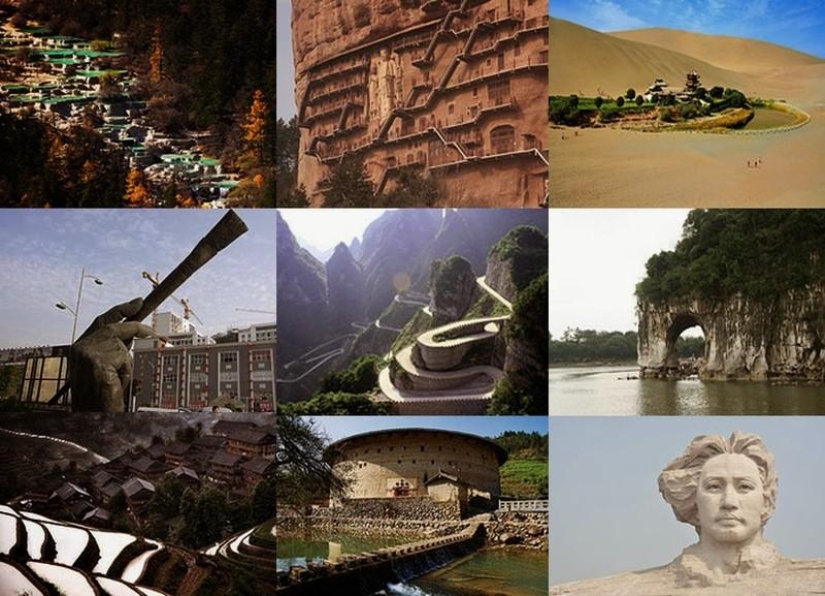
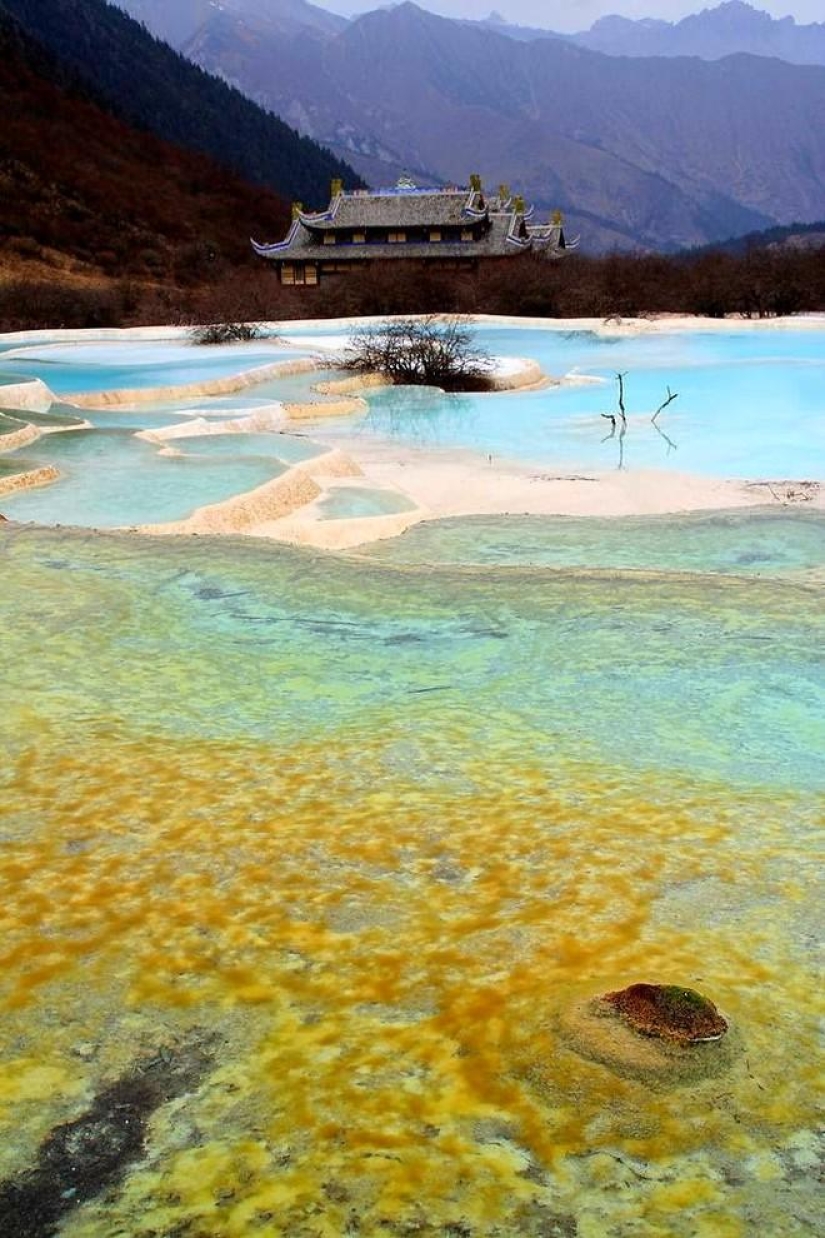
Huanglong, the Yellow Dragon.
The Minshan Mountain Range is located in the north of China's Sichuan Province. This is an area of amazing natural beauty. There is a 4‑kilometer stretch of travertine formations and ponds.
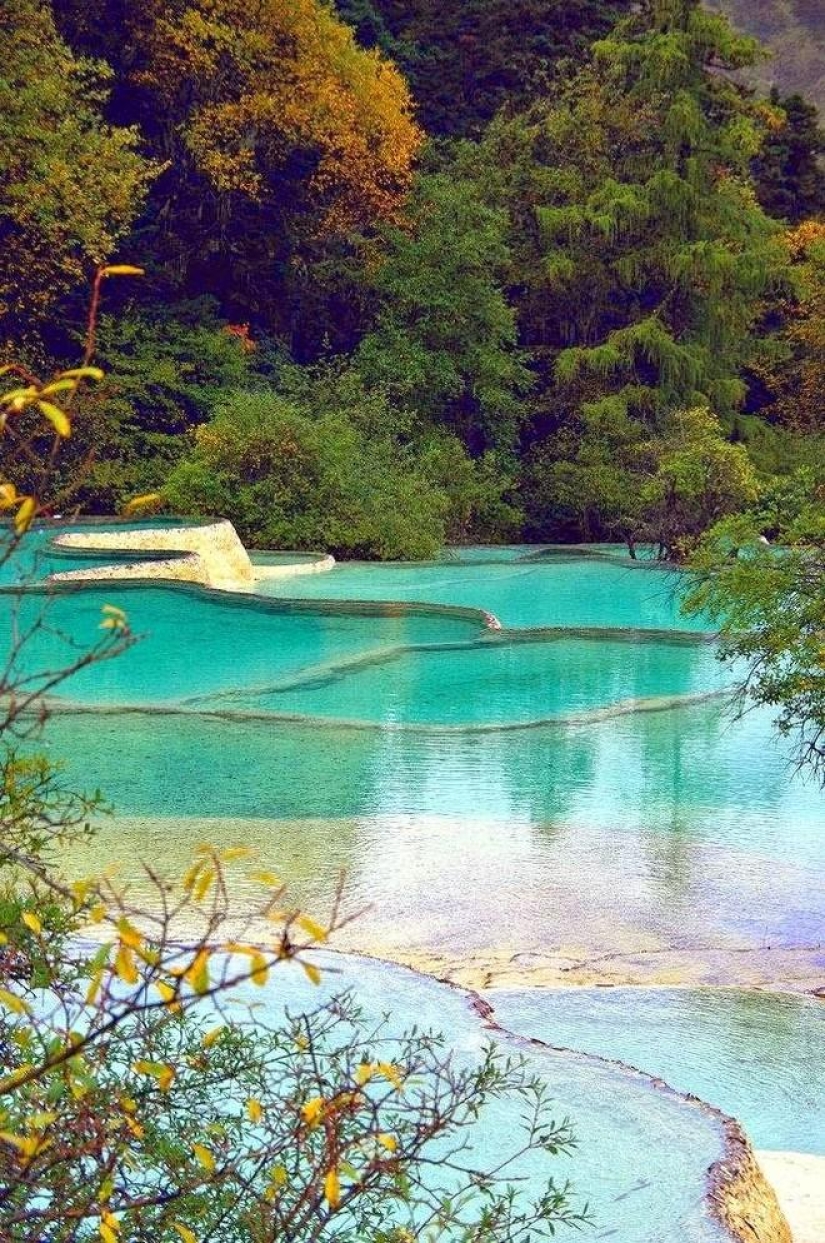
But even in China, this place is not so widely known. And yet this Yellow Dragon is a real miracle of nature.
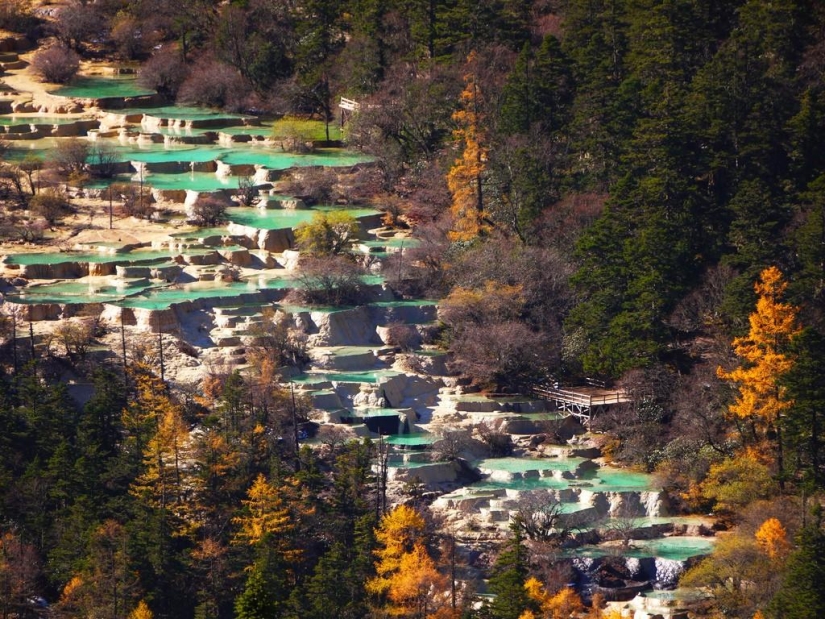
Over the millennia, springs around this fold in the mountains helped to deposit limestone, which gradually accumulated and created a series of basins — more than 3,000-stretching for almost 4 km. The chain of ponds resembles a huge golden dragon, hence the name of the place.
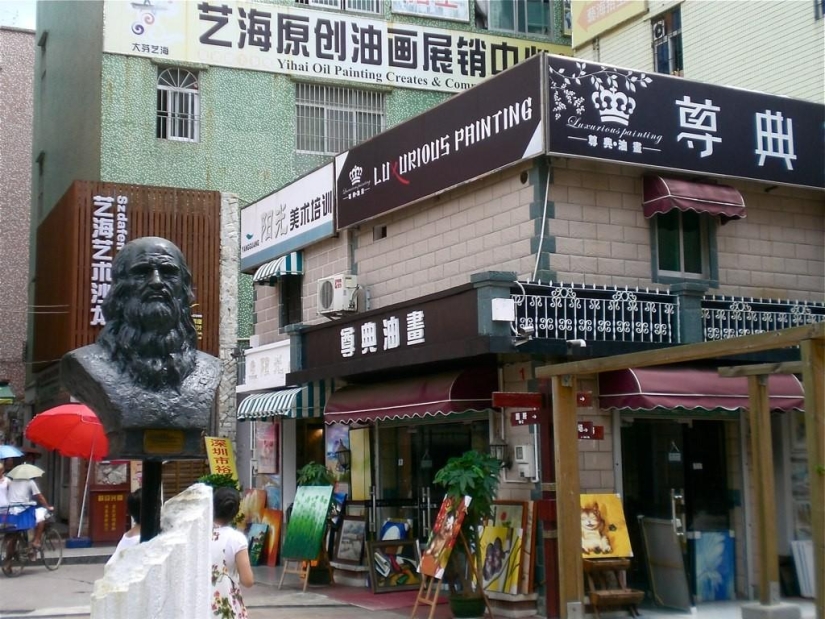
Daphne.
You may have noticed that every room in the hotel has similar oil paintings. Or that you can buy a copy of the Mona Lisa for the price of a mini-tablet.
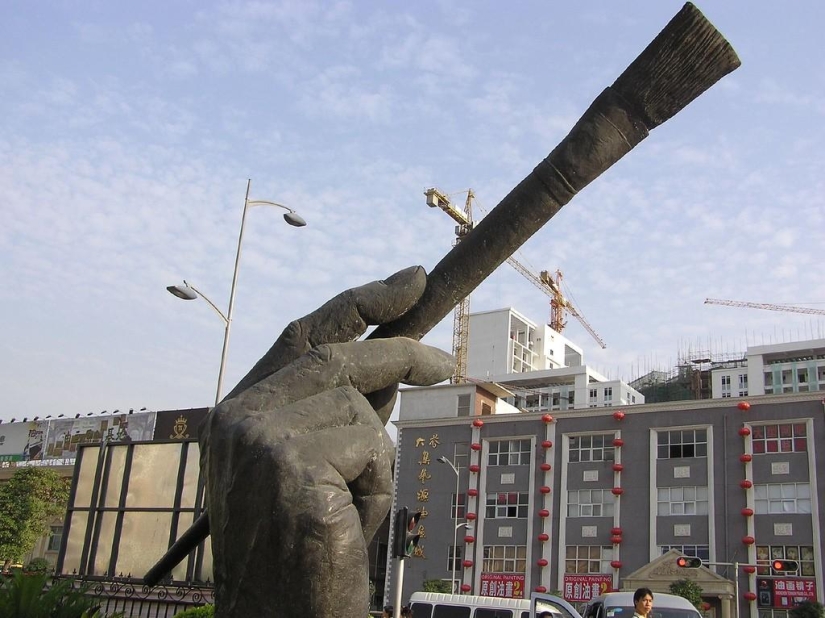
If you think that copying oil paintings is a family business, you are not quite right — it is the business of an entire village.

In this case, a village called Dafen. It was founded in the mid-1990s by a businessman and about two artists. Today, up to 5,000 artists live in Dafen, who together produce more than 5 million paintings a year. This is more than half of the oil paintings created around the world every year.
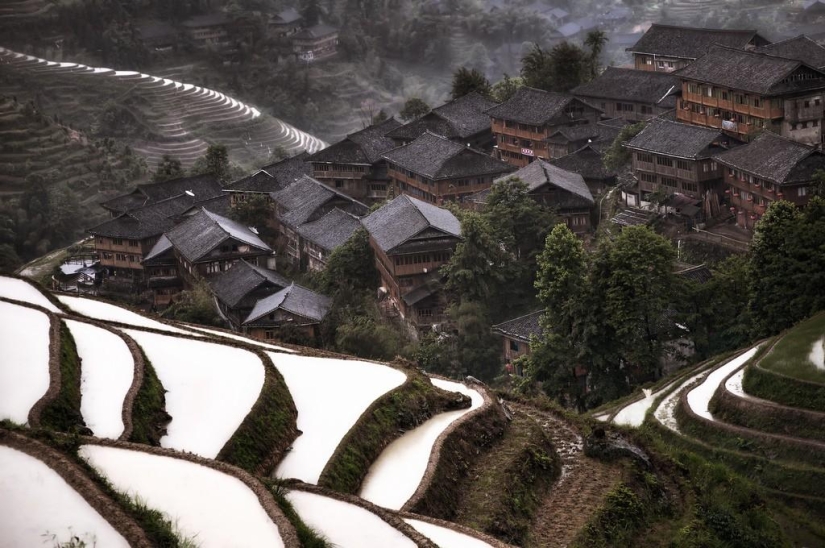
Longsheng Rice Terraces.
The old-timers in Longsheng have a saying: where there is soil, there is a terrace. A two-hour drive from Guilin City in Guangxi Province, the problem of growing rice on steep hills was solved a long time ago. The colossal task of turning the Longsheng Hills into terraces began during the Yuan Dynasty.

It took 400 years to create the terraces. During this time, countless generations worked on them, so that a large harvest of rice could be harvested every year.
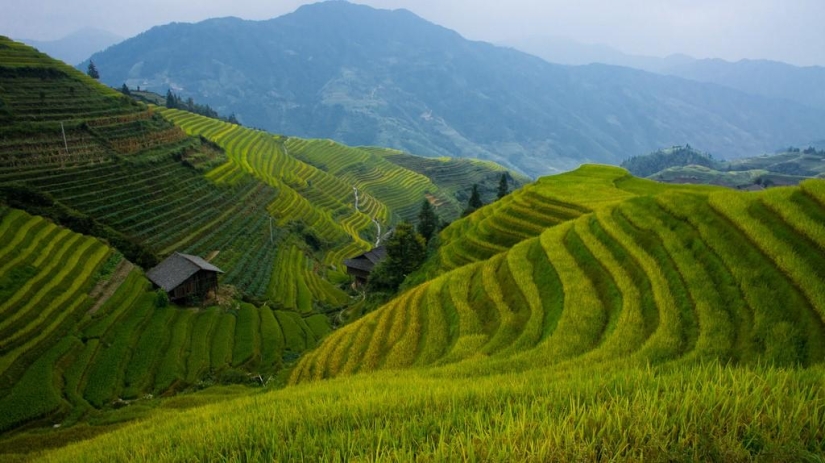
But in an attempt to provide their families with rice, the locals created landscapes of unprecedented beauty. No wonder the Chinese call them "amazing terraces".
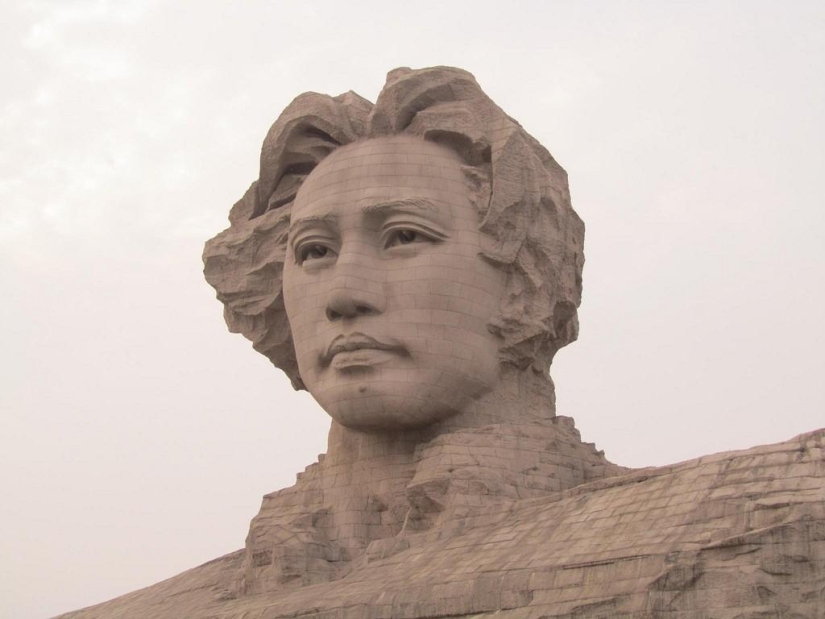
The statue of young Mao in Changsha.
In his youth, Mao Zedong, later known as Chairman Mao, became a Communist in the city of Changsha in South-Central China. When they decided to erect a memorial to the founding father of the People's Republic, the people of Changsha decided to go against the norm. Instead of a mature leader, as most monuments portray him, they decided to erect a monument to a young man.
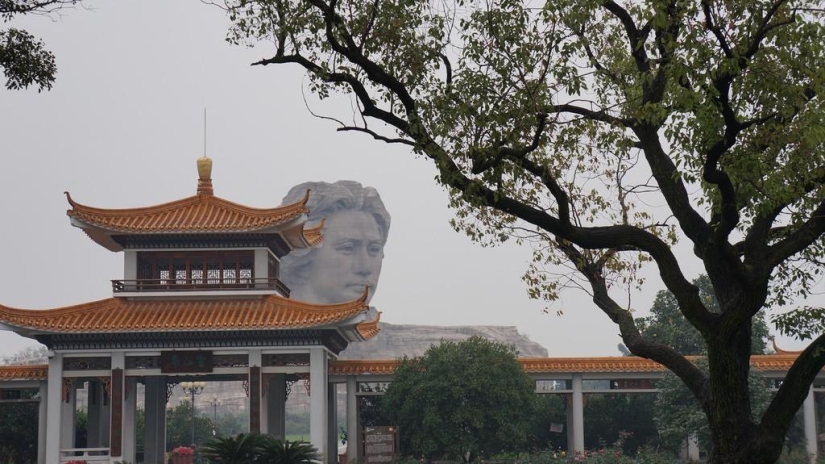
The granite statue rises more than 30 meters. It is located on the island of Juizi in the center of the Xiangjiang River, where Mao wrote a poem in honor of the city.
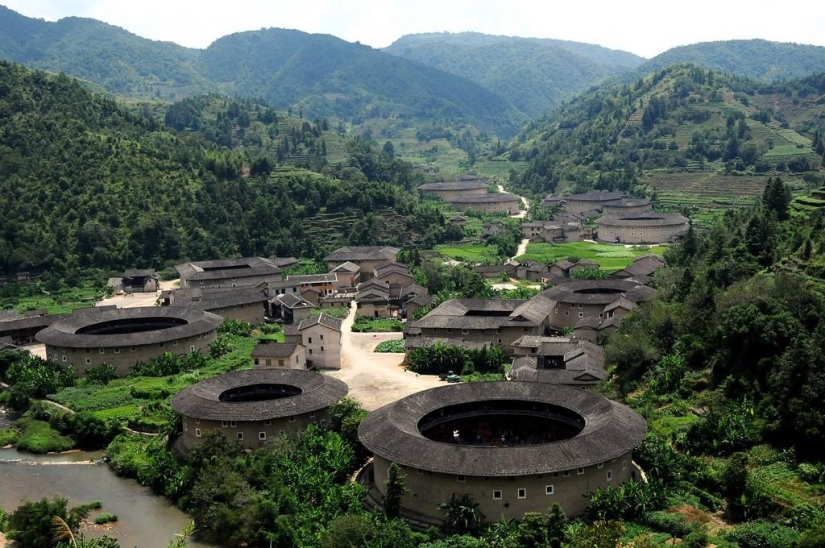
Tulou, Fujian Province.
Sometime in the 12th century, residents of the Chinese province of Fujian decided that their homes did not give them enough protection from armed bandits who had been rampaging in the area for hundreds of years.
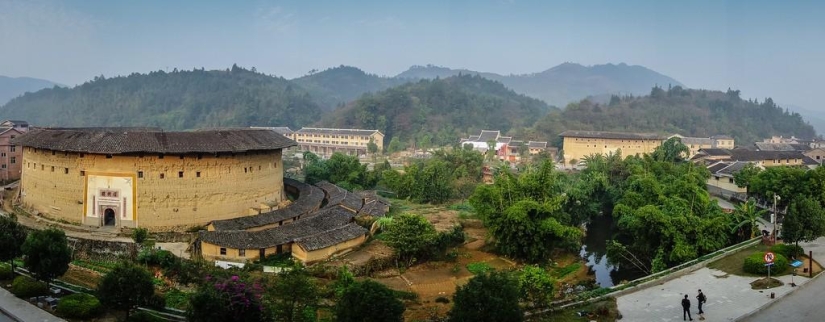
Groups of families came together and built tulou, which could well protect their property and lives in this mountainous area on the southeast coast of China.
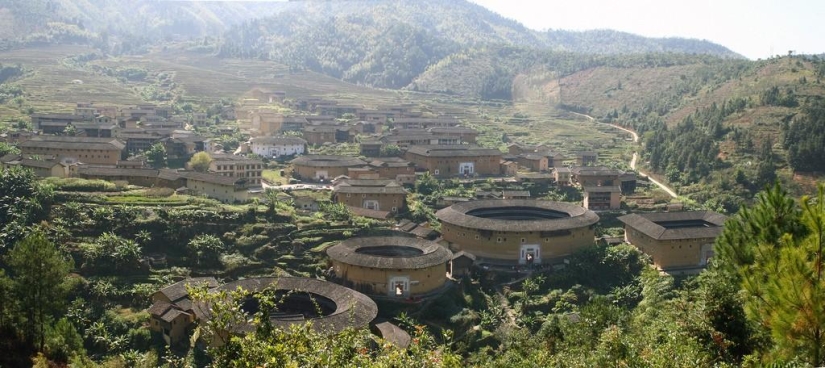
Of course, the idea of building a large round fortified building is not new. But the advanced technology of the time allowed the local clans to create a safe place surrounded by thick walls up to 5 stories high.

Elephant Trunk Hill is the legendary protector of Guilin.
Walking in the hills around Guilin in China is not easy, so at the end of the day, the elephant is thirsty. There is nothing better than putting your trunk in the water and refreshing yourself. But when you're made of stone, this kind of watering can take a lot longer.
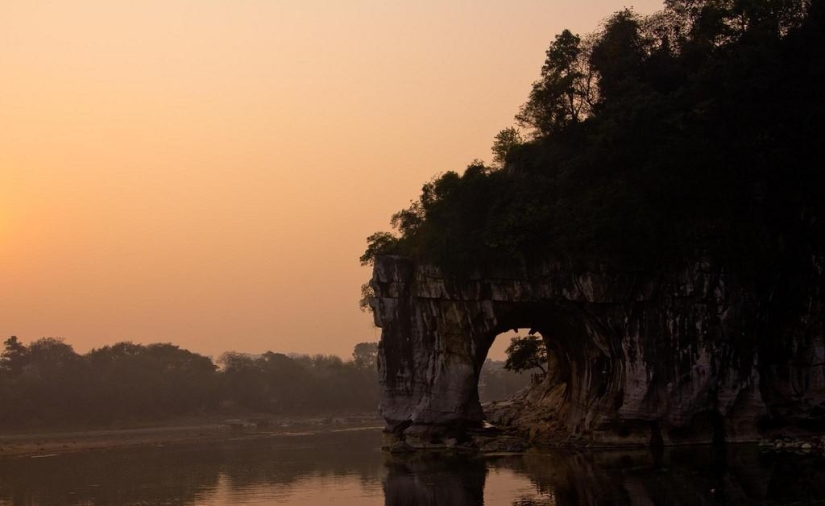
For hundreds of years, the people of Guilin in Guangxi Province considered this hill on the outskirts of the city to be a huge elephant. So do not reach for the glasses-the elephant is really made of stone. This one, in particular, stands where two rivers meet — the Lee and the Peach Blossom. For 1500 years, it has been a symbol of the city's good fortune.
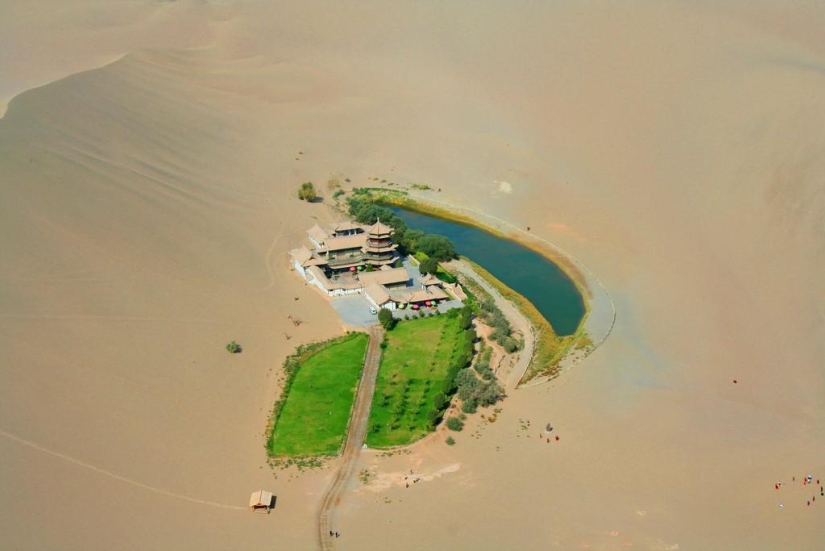
Yueyaquan Lake.
For thousands of years, Silk Road pilgrims and merchants used Lake Yueyaquan as their last stop before heading to the Gobi Desert. The oasis is 6 km from Dunhuang City.
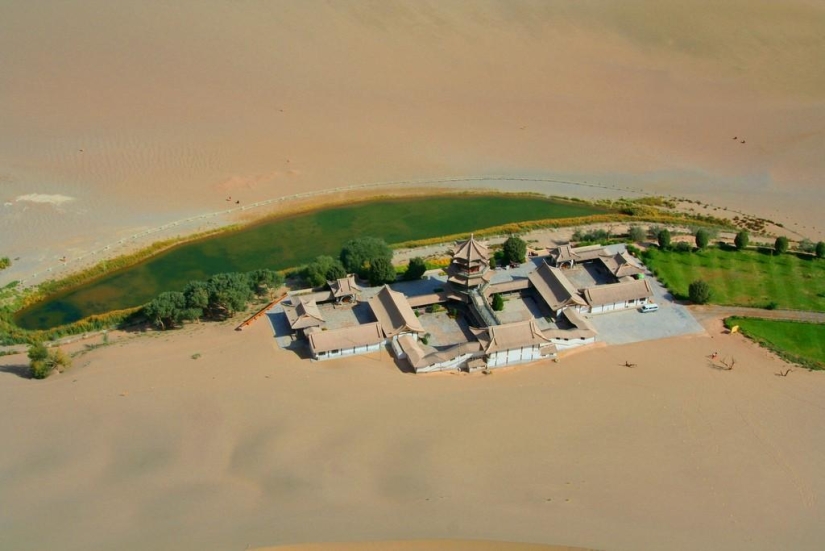
In addition to being an outlet to the west, Dunhuang was also an important "gateway" to China. The travelers followed a chain of oases, skirting the unforgiving sands of the Gobi Desert. They also avoided the ghosts and demons that supposedly hunted in the desert. It is said that the desert was so barren and lifeless that the bones of those who died here were used as signposts.
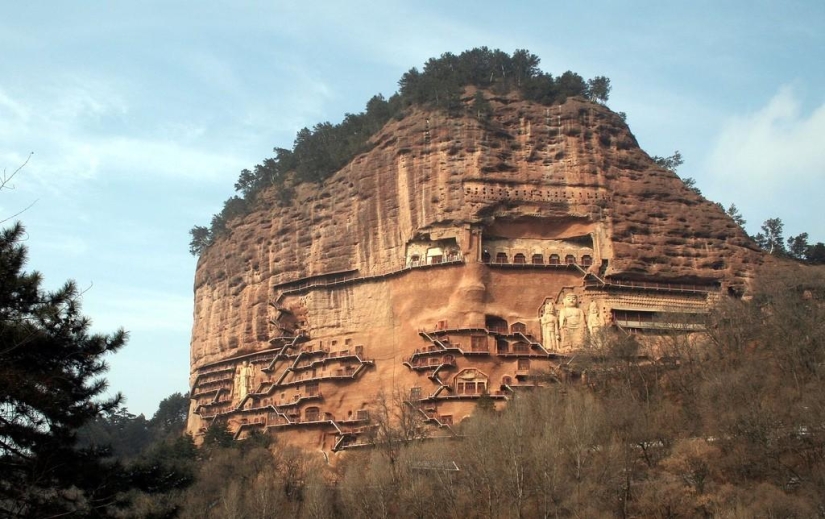
Maijishan Caves.
There are 4 major Buddhist cave complexes in China. The most popular of them is Longmen. The Maijishan caves are less well known. They are located in Gansu Province in northwestern China. These rocks contain 7,000 Buddhist sculptures, not to mention 1,000 square meters of frescoes.

The name of the complex comes from the hill on which the caves are located. It translates as "wheat mountain" and rises 142 m above the flat landscape.

It is believed that the history of the caves goes back to antiquity, to 400 years AD, when Buddhism came to China from India. From there, the tradition of cave temples spread further into the heart of China via the Silk Road.
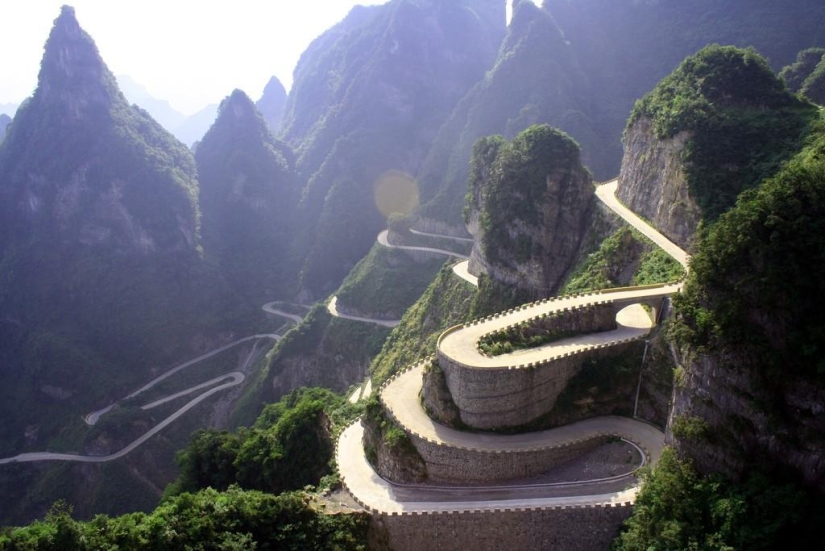
The street to heaven is China's scariest road.
There are really scary roads in this world. If there was an official list of such roads, then the Street to heaven would take the first place in it. It rises from an altitude of 200 m to 1300 m above sea level.
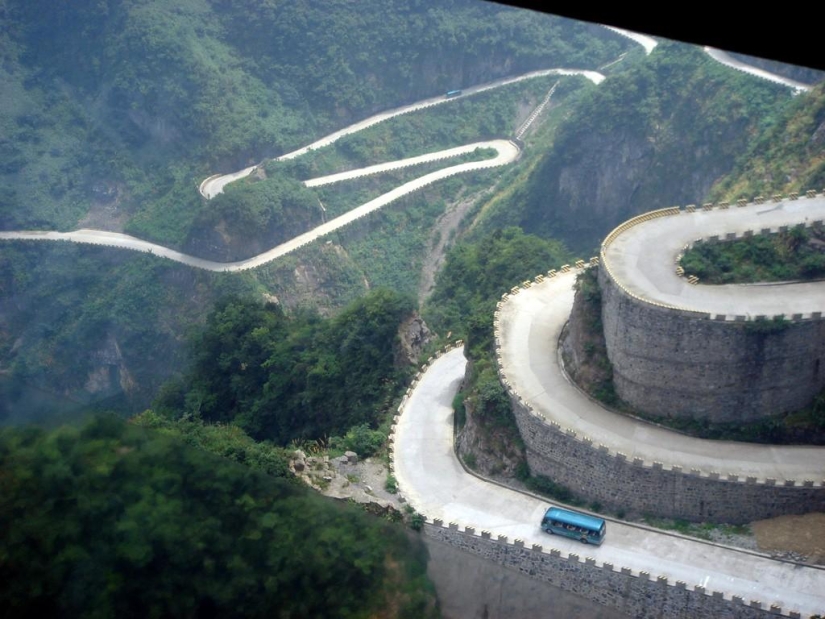
It is not surprising that the construction of the road, which began in 1998, took eight years. Its steep turns are definitely not for the faint of heart. The road goes up the Tianmen Mountain. A great place to enjoy the beautiful views of Hunan Province.
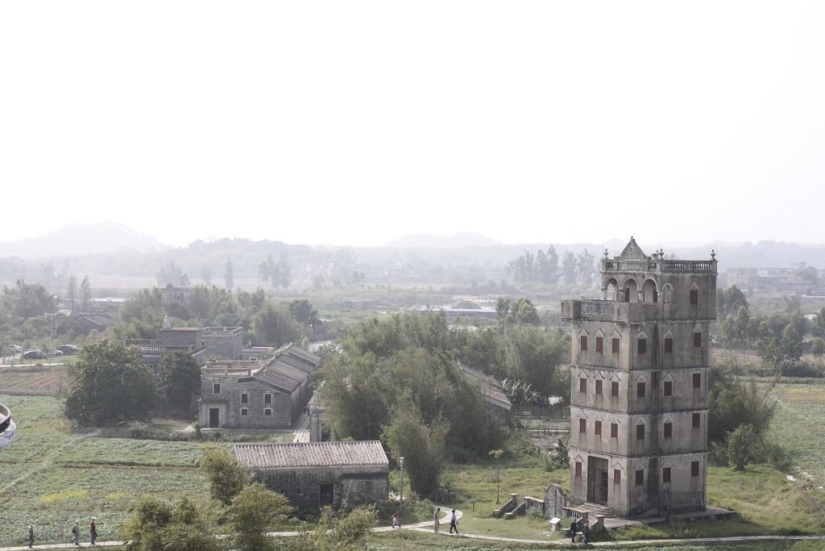
Kaiping fortresses.
The crumbling Kaiping villages themselves are inconspicuous until it comes to diaolou. Towering like thumbs against the backdrop of small villages, these centuries — old fortresses are all that remains of the hoary old days, when the inhabitants of these villages were in danger of robber attacks every day.
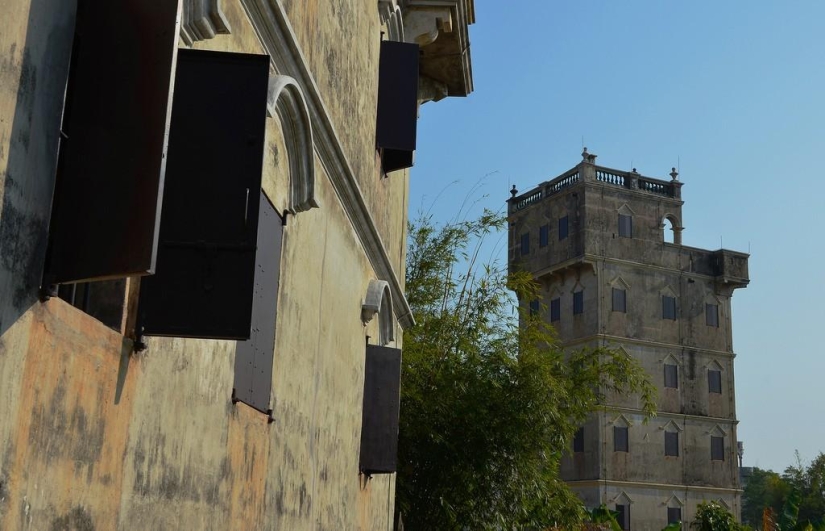
This district in Guangdong Province has been ruled by bandits for a long time, and political unrest has continued for many years.
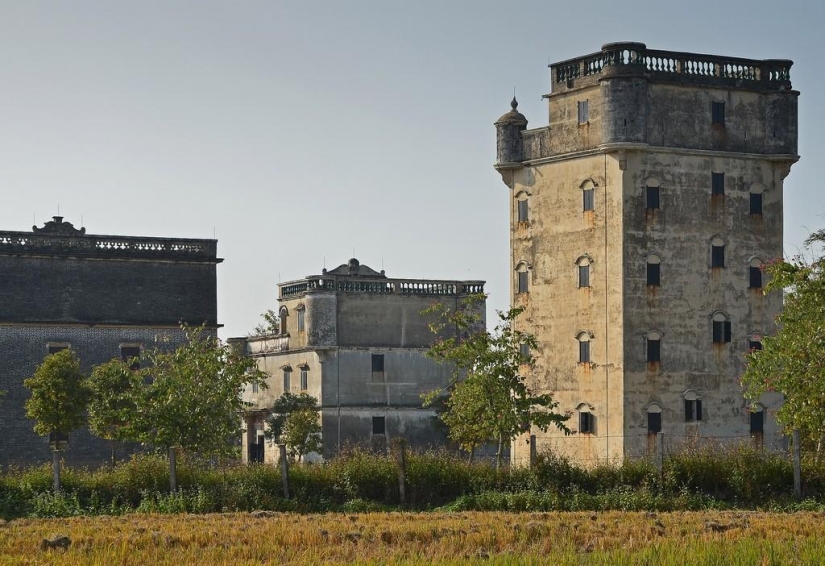
Despite the fact that the towers were built by the Chinese, they combine many different architectural forms with a very interesting history. Now the towers are protected by the government as a historical value.
Keywords: China | Asia | History | Attractions
Post News ArticleRecent articles

Leonardo da Vinci was accused of being fond of orgies. William the Conqueror, despite all his successes, was called a "Bastard" ...

Modesty? Decency? A sense of tact? No, you haven't heard! Just look at what the people from the selection below are doing! No ...
Related articles

A music album is not only a collection of tracks, but also an example of fine art. Each cover carries a certain meaning, and behind ...

In November 69 BC, she was born Cleopatra, the last Queen of Egypt from the Macedonian dynasty of the Ptolemies. Cleopatra, perhaps ...

A good sniper doesn't have to be a career soldier. This simple postulate was well understood by the Red Army soldiers who ...

American documentary photographer Bruce Davidson came to the UK in 1960 for a couple of months on the assignment of Queen magazine. ...